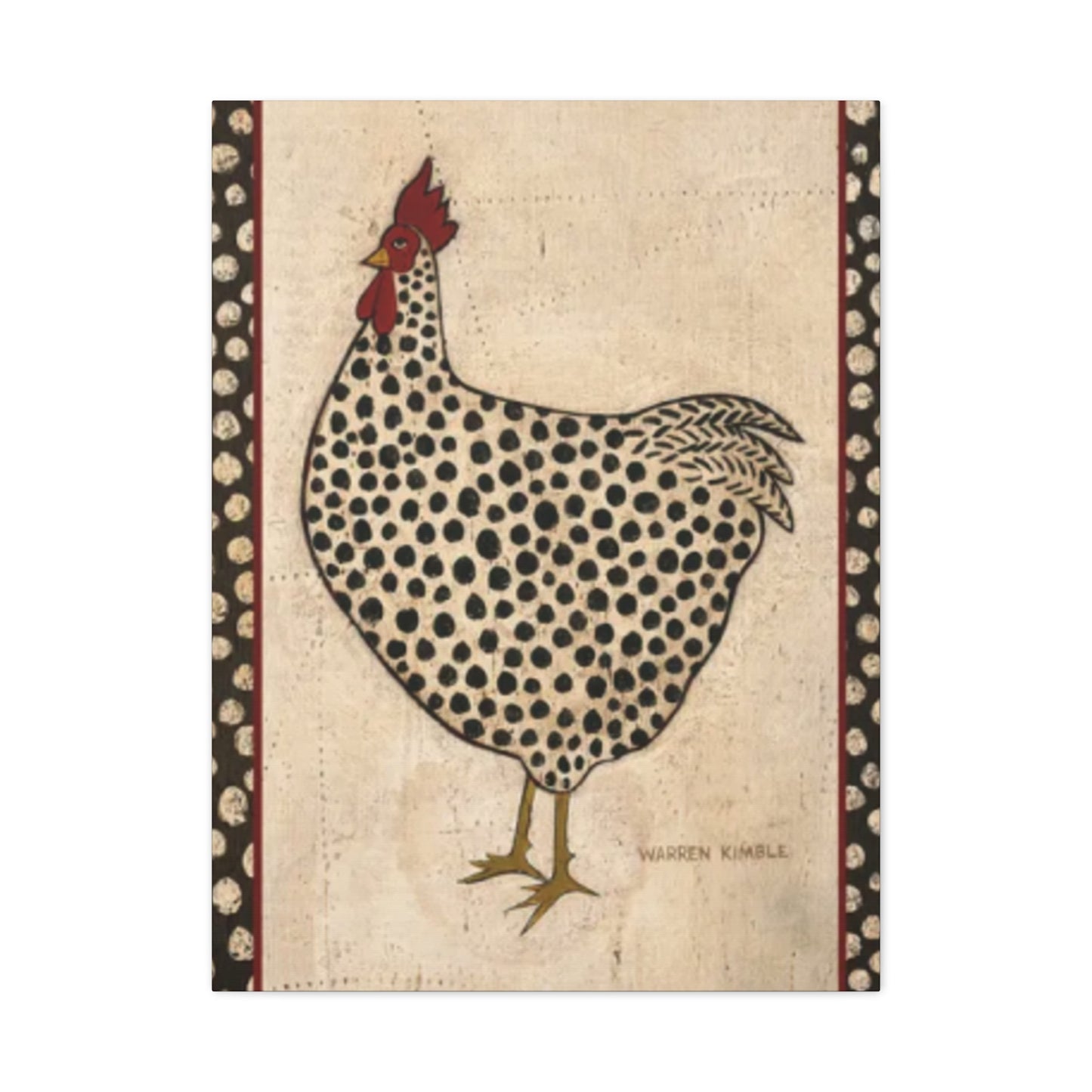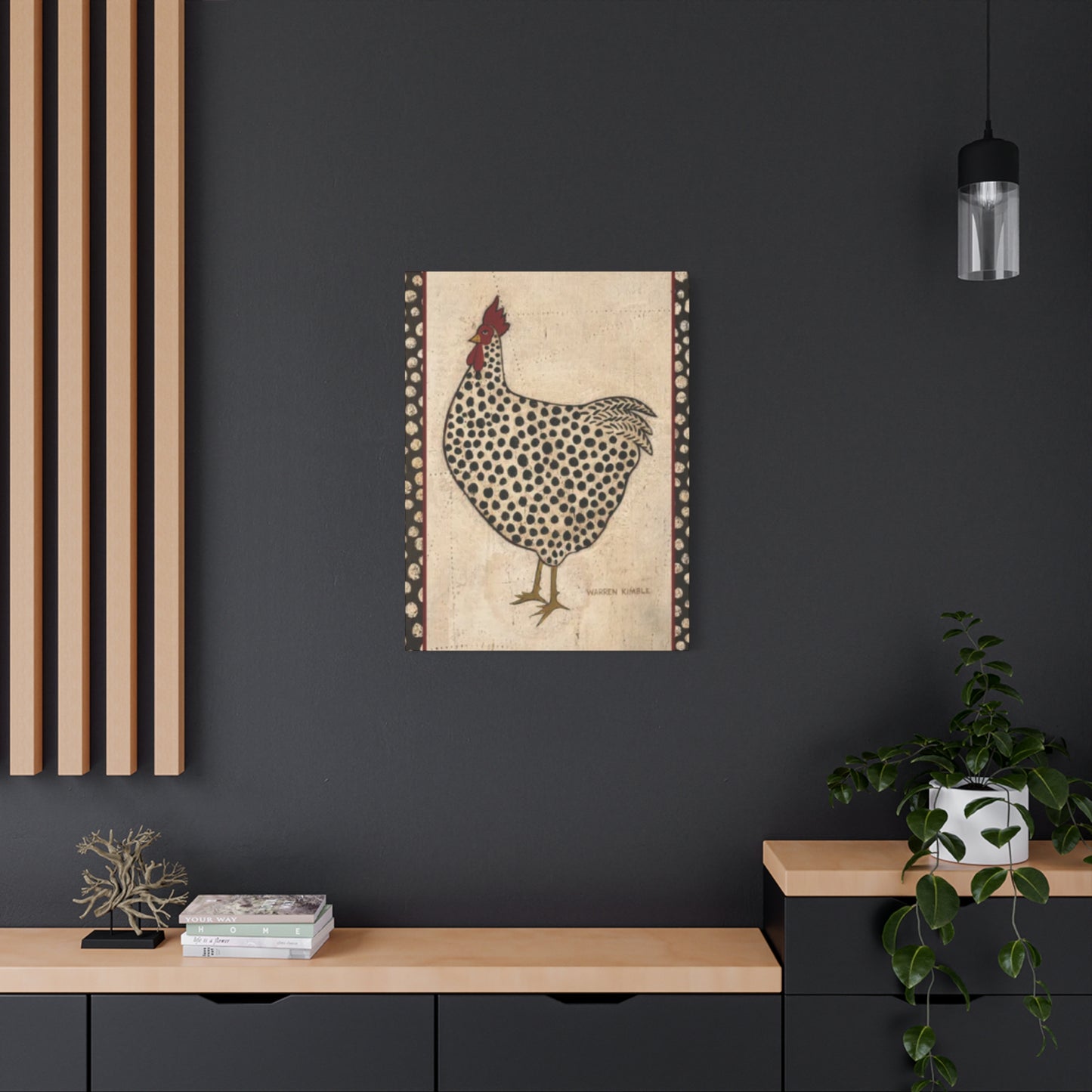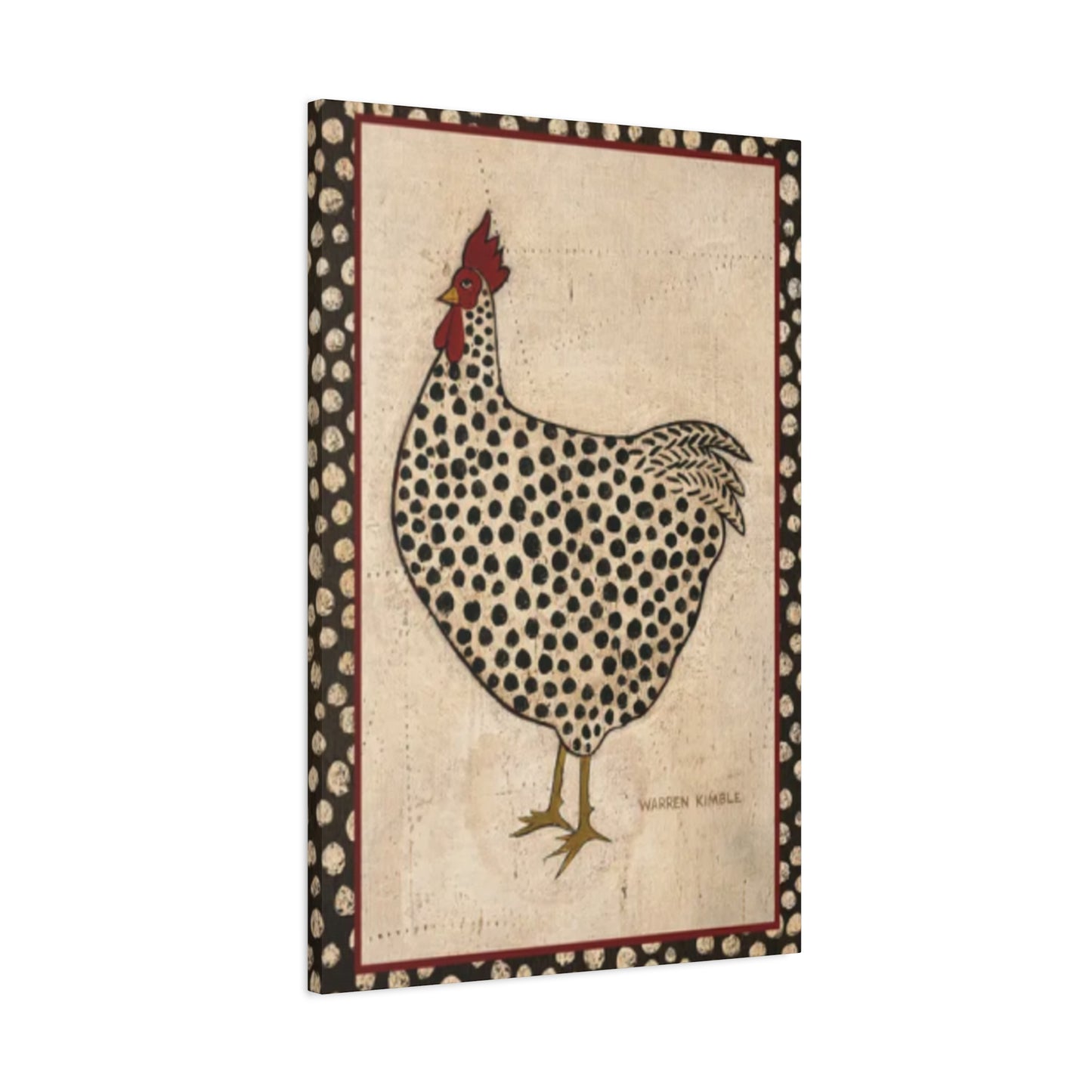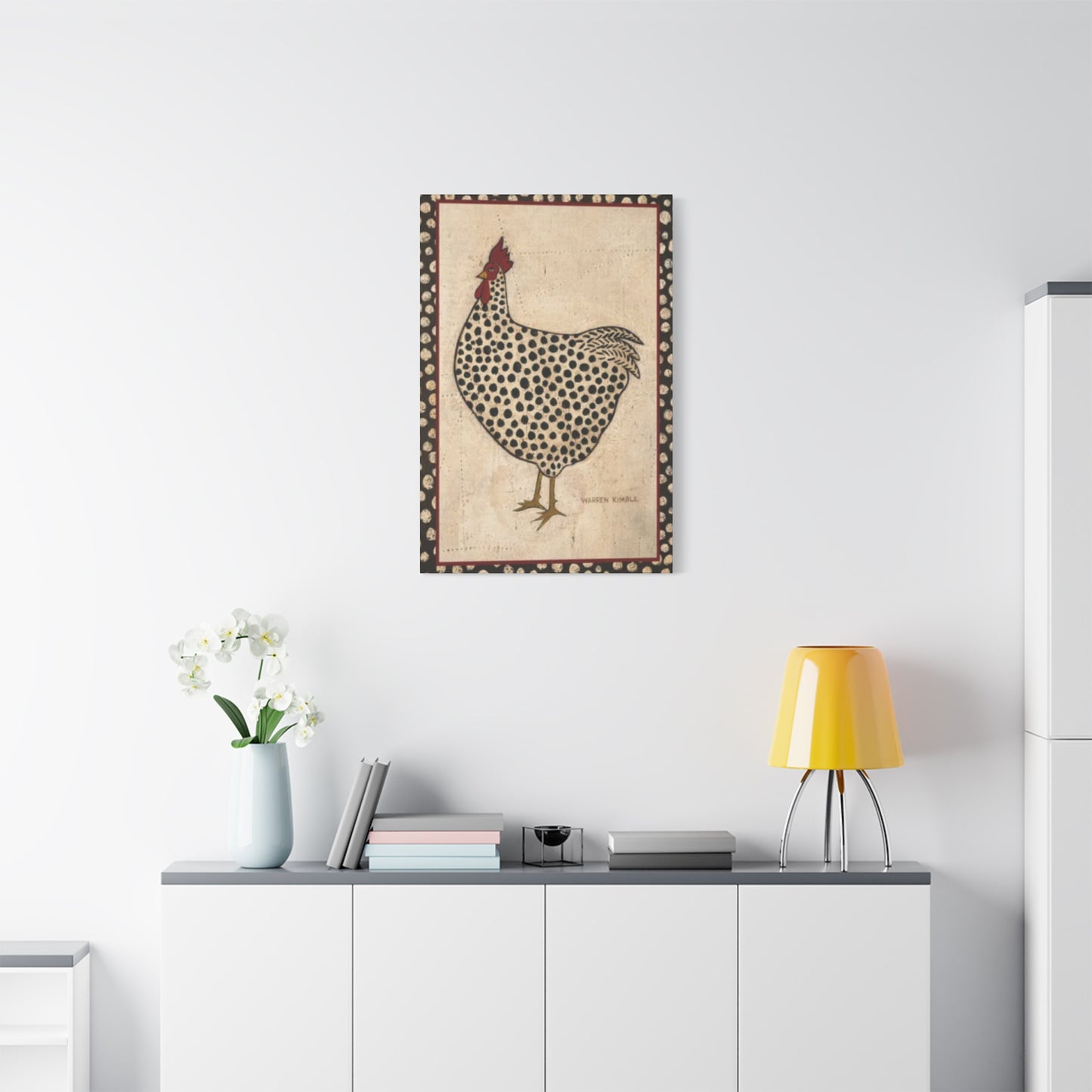Mixing Humor: The Appeal of Chicken Drawings in Contemporary Wall Art Decor
In the realm of contemporary folk art, few subjects capture the heart quite like the humble barnyard fowl. Kimble Warren has emerged as a distinguished artist whose poultry-themed creations have resonated with art enthusiasts and home decorators alike. Through delicate brushstrokes and imaginative compositions, Warren brings these feathered creatures to life in ways that celebrate both their natural beauty and their endearing quirks. This comprehensive exploration delves into the captivating world of Warren's chicken-themed artwork, examining the techniques, inspirations, and cultural significance that make these pieces so beloved.
The Artistic Vision Behind Warren's Poultry Masterpieces
Kimble Warren's approach to chicken art transcends mere representation, elevating these common farm animals into subjects worthy of fine art appreciation. The artist's vision centers on capturing the inherent personality and charm that each bird possesses, transforming what might be considered ordinary barnyard scenes into extraordinary celebrations of rural life. Warren's technique involves careful observation of chicken behavior, studying their movements, expressions, and social interactions to infuse each piece with authentic character.
The artistic philosophy underlying Warren's work reflects a deep appreciation for the simple pleasures found in country living. Rather than romanticizing farm life, the artist presents an honest yet affectionate portrayal of these creatures, highlighting their natural dignity and unexpected grace. This approach resonates with viewers who seek art that speaks to universal themes of home, comfort, and connection to nature.
Warren's color palette typically features warm earth tones that evoke the rustic atmosphere of farmyard settings. Rich browns, golden yellows, and muted reds dominate many compositions, creating a sense of warmth and familiarity that draws viewers into the scene. The artist often incorporates subtle background elements that suggest the farm environment without overwhelming the central poultry subjects.
The emotional impact of Warren's work stems from the artist's ability to capture fleeting moments of chicken behavior that reveal their individual personalities. A hen protectively gathering her chicks, a rooster strutting with pride, or a group of birds engaged in their daily pecking routines all become subjects worthy of artistic interpretation under Warren's skilled hand.
Exploring the Whimsical Nature of Chicken-Themed Artwork
The whimsical quality that defines Warren's poultry art emerges from the artist's keen eye for the amusing and endearing aspects of chicken behavior. These birds, often dismissed as simple farm animals, reveal complex social structures and individual quirks when observed closely. Warren capitalizes on these characteristics, creating compositions that celebrate the unexpected humor and charm found in everyday chicken interactions.
One of the most appealing aspects of Warren's whimsical approach is the anthropomorphic qualities subtly suggested in the chicken portrayals. While maintaining biological accuracy, the artist manages to convey emotions and personalities that viewers can relate to on a human level. A chicken's sideways glance might suggest curiosity or mischief, while another's protective stance over eggs conveys maternal devotion that transcends species boundaries.
The whimsical elements in Warren's work often manifest through clever compositional choices and subtle details. A chicken wearing a tiny hat might appear in one corner of a painting, or birds might be arranged in seemingly choreographed formations that suggest they're engaged in some grand performance. These touches add layers of meaning and entertainment value that keep viewers returning to discover new details with each viewing.
Warren's ability to find humor in the mundane aspects of farm life reflects a broader artistic tradition of celebrating the overlooked and underappreciated. By elevating chickens to the status of art subjects, the artist challenges conventional hierarchies of what deserves artistic attention, suggesting that beauty and meaning can be found in the most unexpected places.
The playful nature of these artworks makes them particularly appealing to families with children, who often delight in the recognizable yet imaginatively presented chicken characters. This accessibility contributes to the widespread appeal of Warren's work across different age groups and artistic preferences.
Rustic Charm and Its Role in Contemporary Art
The rustic charm embodied in Warren's chicken art speaks to a broader cultural longing for connection to simpler times and more authentic ways of living. In an increasingly digital and urbanized world, these artworks serve as gentle reminders of the pastoral lifestyle that many people associate with peace, authenticity, and genuine values. The rustic aesthetic goes beyond mere nostalgia, representing a deliberate artistic choice that celebrates traditional craftsmanship and timeless themes.
Warren's rustic approach manifests in various technical aspects of the artwork. Brushwork often retains a slightly loose, hand-crafted quality that emphasizes the artist's human touch rather than striving for photographic precision. This technique creates an intimate connection between the artist, the subject matter, and the viewer, fostering a sense of warmth and approachability that more polished styles might lack.
The materials and presentation methods chosen for Warren's chicken art often reinforce the rustic theme. Canvas textures, frame selections, and even the paper choices for prints all contribute to an overall aesthetic that feels grounded in traditional artistic practices. This attention to presentation details ensures that the rustic charm extends beyond the painted surface to encompass the entire viewing experience.
Color choices play a crucial role in establishing the rustic atmosphere of Warren's work. Muted tones, weathered effects, and the strategic use of earth pigments create compositions that feel aged and authentic rather than commercially produced. This approach helps the artwork integrate seamlessly into homes decorated in country, farmhouse, or traditional styles while maintaining enough artistic sophistication to appeal to serious art collectors.
The rustic charm of Warren's chicken art also connects to broader movements in contemporary art that seek to preserve and celebrate folk traditions. By working within this aesthetic framework, the artist participates in an ongoing dialogue about the value of traditional skills and the importance of maintaining connections to our agricultural heritage.
Farmyard Themes and Their Cultural Significance
The farmyard setting that frequently appears in Warren's chicken art carries deep cultural significance that extends far beyond mere decorative appeal. These scenes tap into fundamental human experiences related to food production, animal stewardship, and the cycles of rural life that have shaped human civilization for millennia. The cultural resonance of farmyard themes helps explain why Warren's work appeals to such a broad audience across different geographical and social contexts.
Historically, the farmyard has represented security, abundance, and the fruits of honest labor. Warren's artistic interpretation of these themes presents chickens not just as livestock but as partners in the human endeavor to create sustainable, productive communities. This perspective elevates the status of these animals from mere commodities to valued participants in the agricultural ecosystem.
The cultural significance of farmyard imagery also connects to broader themes of environmental stewardship and sustainable living practices. Warren's chicken art often suggests harmonious relationships between humans and animals, presenting farm life as a model of balanced interaction with nature. This message resonates particularly strongly with contemporary audiences concerned about industrial agriculture and environmental degradation.
Family traditions and generational knowledge transfer represent another important cultural dimension of farmyard themes. Warren's depictions of chickens often evoke memories of grandparents' farms, childhood visits to rural relatives, or stories passed down through families about agricultural life. These emotional connections help explain why chicken art often becomes treasured family heirlooms rather than merely decorative objects.
The seasonal rhythms inherent in farm life provide Warren with rich thematic material that connects to universal human experiences. Chickens caring for their young in spring, foraging during summer abundance, or huddling together for warmth in winter all reflect broader patterns of survival, nurture, and adaptation that resonate across cultural boundaries.
The Playful Poultry Approach in Fine Art
Warren's playful approach to poultry subjects represents a significant departure from traditional animal portraiture, which often emphasized either scientific accuracy or hunting trophy presentations. Instead, the artist's work celebrates the entertaining and endearing qualities of chickens, creating compositions that invite viewers to smile and find joy in unexpected places. This playful sensibility distinguishes Warren's work within the broader category of animal art.
The playful elements in Warren's poultry art often emerge through careful attention to chicken body language and social interactions. Chickens engage in numerous behaviors that can appear comic or charming to human observers: their strutting walks, head-tilting expressions of curiosity, and elaborate dust-bathing rituals all provide material for artistic interpretation that emphasizes entertainment value alongside aesthetic appeal.
Compositional choices contribute significantly to the playful quality of Warren's work. The artist frequently arranges chickens in scenes that suggest narrative possibilities, encouraging viewers to imagine stories about the birds' activities and relationships. A group of hens gathered around a choice morsel might suggest gossip or negotiation, while a lone rooster surveying his domain could represent pride or contemplation.
Color and texture choices in Warren's playful poultry art often emphasize the chickens' most attractive or amusing features. Brilliant red combs and wattles receive particular attention, as do the iridescent qualities of certain feathers that catch and reflect light in captivating ways. These technical details serve the playful artistic vision while maintaining respect for the natural beauty of the subjects.
The playful approach also extends to the scale and perspective choices Warren employs. Some compositions present chickens from unusual angles or at scales that emphasize their most charming characteristics. Close-up views of chicken faces, for instance, can reveal expressions and details that surprise viewers accustomed to seeing these animals only from a distance.
Sketching Techniques That Bring Chickens to Life
Warren's sketching techniques form the foundation of all the more finished poultry artworks, and understanding these methods provides insight into the artist's overall approach to capturing chicken subjects. The preliminary sketches reveal Warren's deep understanding of chicken anatomy, behavior, and the essential characteristics that make each bird unique. These technical skills enable the artist to create convincing and appealing chicken representations across various media and scales.
The initial observation phase of Warren's sketching process involves extensive study of live chickens in their natural environment. The artist spends considerable time watching flocks, noting individual behaviors, and identifying the specific postures and expressions that best convey each bird's personality. This careful observation phase ensures that the finished artworks possess authenticity that resonates with viewers familiar with actual chicken behavior.
Line quality plays a crucial role in Warren's sketching technique. The artist employs varying line weights to suggest different aspects of chicken anatomy and texture. Heavier lines might define the outer contours of a bird's body, while lighter strokes suggest the delicate patterns of feather arrangements. This varied approach creates drawings that feel dynamic and alive rather than static or mechanical.
Shading techniques in Warren's chicken sketches often emphasize the three-dimensional qualities of the birds while suggesting their soft, feathered textures. The artist typically works with a combination of hatching, cross-hatching, and blending techniques that create realistic shadows and highlights without overwhelming the essential character of each subject. These shading choices contribute to the overall sense of warmth and approachability that characterizes Warren's style.
Compositional sketching represents another crucial aspect of Warren's process. The artist often creates multiple preliminary compositions, experimenting with different arrangements of chickens and background elements until discovering the most effective presentation. These compositional studies reveal Warren's commitment to creating harmonious, balanced artworks that guide the viewer's eye naturally through the scene.
Bringing Agricultural Life Into Contemporary Homes
The integration of Warren's chicken art into contemporary home environments represents more than simple decoration; it reflects a deliberate choice to maintain connections with agricultural heritage and natural cycles. Modern homeowners who choose to display chicken-themed artwork often seek to create living environments that feel grounded, authentic, and connected to fundamental human experiences rather than purely aesthetic or fashionable.
Kitchen environments provide particularly natural settings for Warren's chicken art, given the obvious connections between these birds and food preparation. However, the artistic quality of Warren's work elevates these pieces beyond mere culinary decoration, allowing them to serve as genuine artistic focal points that happen to complement cooking and dining themes. The warmth and familiarity of chicken imagery creates welcoming atmospheres in spaces dedicated to nourishment and family gathering.
Living areas benefit from the conversation-starting qualities of Warren's chicken art. These pieces often prompt discussions about childhood farm experiences, family food traditions, or broader topics related to sustainable living and animal welfare. The approachable nature of chicken subjects makes them effective ice-breakers that help create comfortable social environments for both family members and guests.
Bedroom and private areas can incorporate Warren's more contemplative chicken pieces, particularly those that emphasize the peaceful, nurturing aspects of farm life. Images of hen and chicks, for instance, convey themes of protection, family, and comfort that align well with the restful purposes of private living areas. The gentle humor inherent in much of Warren's work also contributes to creating positive, uplifting environments.
Children's areas represent natural locations for Warren's more whimsical chicken artworks. Young people often respond enthusiastically to the playful elements in these pieces, and the educational aspects of chicken art can spark interest in agriculture, animal care, and natural sciences. The durability and timeless appeal of Warren's style ensures that these pieces remain relevant as children grow and their tastes develop.
Quirky Characteristics That Define Warren's Style
The quirky elements that distinguish Warren's chicken art stem from the artist's keen observation of the amusing and unexpected aspects of chicken behavior and appearance. These quirky touches transform what might otherwise be straightforward animal portraits into distinctive artistic statements that reflect Warren's unique perspective and sense of humor. Understanding these quirky characteristics helps viewers appreciate the depth and intentionality behind seemingly simple chicken representations.
Facial expressions represent one of the most immediately recognizable quirky elements in Warren's chicken art. The artist has developed remarkable skill in capturing the subtle variations in chicken expressions that suggest different moods, thoughts, and personalities. A slightly tilted head might convey curiosity, while a direct stare could suggest confidence or challenge. These expressive details create emotional connections between viewers and the chicken subjects.
Posture and body language provide another rich source of quirky content in Warren's work. Chickens naturally assume numerous positions that can appear human-like or theatrical to observant viewers. Warren capitalizes on these natural behaviors, selecting and emphasizing postures that suggest character traits or emotional states that viewers can relate to on a human level without anthropomorphizing the birds inappropriately.
The artist's attention to the more amusing aspects of chicken appearance also contributes to the quirky appeal of the work. Elaborate feather patterns, dramatic combs and wattles, and the somewhat ridiculous way chickens move all provide material for artistic interpretation that emphasizes entertainment value alongside aesthetic appeal. These elements ensure that Warren's work maintains a sense of joy and lightness.
Environmental details in Warren's compositions often include quirky touches that reward careful observation. A tiny insect might appear in one corner, suggesting the chicken's next snack, or unusual objects might be scattered around the farmyard setting, creating mini-narratives within the larger composition. These details demonstrate Warren's commitment to creating rich, engaging artworks that offer new discoveries with repeated viewing.
Celebrating Simple Joys Through Artistic Expression
Warren's chicken art serves as a powerful reminder of the profound satisfaction and beauty that can be found in life's simplest pleasures. In a culture often focused on complexity, achievement, and constant stimulation, these artworks celebrate the quiet contentment that comes from observing natural behaviors and appreciating the inherent worth of humble subjects. This philosophical approach distinguishes Warren's work within the broader landscape of contemporary art.
The simple joys celebrated in Warren's chicken art include the daily rhythms of farm life: chickens pecking for insects, dust bathing in sunny spots, or settling down for evening roost. These ordinary activities become subjects worthy of artistic attention under Warren's interpretation, suggesting that meaning and beauty surround us constantly if we develop the eyes to see them. This message resonates particularly strongly with viewers seeking to cultivate more mindful, appreciative approaches to daily life.
Maternal themes represent another category of simple joys frequently explored in Warren's work. Images of hens with their chicks convey universal experiences of protection, nurture, and the continuation of life cycles that connect viewers to fundamental biological and emotional realities. These themes provide comfort and reassurance while celebrating the natural world's capacity for renewal and growth.
Social interactions among chickens provide Warren with rich material for celebrating the simple joys of community and companionship. Flocks of chickens engaging in their social hierarchies, sharing food sources, or simply existing peacefully together demonstrate that fulfillment can be found in basic social connections and shared experiences rather than complex achievements or acquisitions.
The seasonal aspects of chicken life offer additional opportunities for Warren to celebrate simple joys associated with natural cycles. Spring scenes of new chicks exploring their environment, summer images of chickens enjoying abundant foraging opportunities, or winter depictions of flocks huddling together for warmth all connect to broader themes of adaptation, survival, and finding contentment within natural limitations.
Ink Techniques and Warren's Distinctive Approach
Warren's mastery of ink as an artistic medium contributes significantly to the distinctive character of the chicken art. Ink requires particular technical skills and offers unique expressive possibilities that the artist exploits effectively to create compelling poultry representations. Understanding Warren's ink techniques provides insight into the artistic choices that give these works their particular visual impact and emotional resonance.
Line variation represents one of the most important technical aspects of Warren's ink work. The artist employs different pen nibs and brush sizes to create lines of varying weights and textures, using these variations to suggest different aspects of chicken anatomy and environment. Thick, confident lines might define major body contours, while delicate, wispy strokes suggest individual feathers or environmental details.
Texture creation through ink techniques allows Warren to convey the soft, layered quality of chicken feathers while maintaining the crisp, defined character that ink naturally provides. The artist often employs stippling, hatching, and cross-hatching techniques in combination to build up areas of tone and texture that feel both realistic and artistically interesting. These techniques require considerable skill and patience but produce results that photographic media cannot match.
Contrast management in Warren's ink drawings demonstrates sophisticated understanding of how black and white relationships can create dramatic visual impact while maintaining the gentle, approachable character appropriate to chicken subjects. The artist carefully balances dark and light areas to guide viewer attention and create compositional harmony without overwhelming the inherent charm of the subject matter.
Water wash techniques, when Warren employs them, add additional layers of visual interest to the ink drawings. Subtle gray tones created through diluted ink applications can suggest atmospheric effects, create transitional areas between major compositional elements, or add depth to background environments. These techniques expand the expressive range of pure ink drawing while maintaining the medium's essential characteristics.
Rustic Poultry Prints and Their Home Applications
The adaptation of Warren's original chicken artworks into print formats extends the accessibility and practical application of these pieces while maintaining their essential artistic character. Rustic poultry prints allow broader audiences to enjoy Warren's artistic vision while providing versatile decorating options that can integrate into various home environments and design schemes. Understanding the print production process and application possibilities helps potential collectors make informed decisions about incorporating these works into their living environments.
High-quality reproduction techniques ensure that Warren's prints maintain the essential visual characteristics of the original artworks while offering the durability and affordability that make them practical for everyday home use. Advanced printing technologies can capture subtle color variations, texture details, and line qualities that preserve the artistic integrity of the original pieces. This technical sophistication allows prints to serve as legitimate artistic statements rather than mere decorative accessories.
Paper selection for Warren's rustic poultry prints often emphasizes materials that complement the farmhouse aesthetic and ensure longevity under normal home display conditions. Heavyweight papers with subtle textures can enhance the rustic appeal while providing the stability necessary for long-term display. Archival quality materials protect against fading and deterioration, ensuring that these pieces remain attractive investments over time.
Sizing options for Warren's prints accommodate different architectural scales and decorating approaches. Smaller prints work effectively in groups or as accent pieces in intimate settings, while larger formats can serve as dramatic focal points in main living areas. The availability of multiple sizes allows collectors to create cohesive decorating schemes that incorporate Warren's chicken art at various scales throughout their homes.
Framing considerations for rustic poultry prints often emphasize materials and styles that complement the farmhouse aesthetic without overwhelming the artwork itself. Natural wood frames, distressed finishes, and simple matte treatments typically work well with Warren's style, allowing the chicken subjects to remain the primary focus while enhancing the overall rustic appeal.
The Fun and Whimsy Factor in Chicken Art
The entertainment value inherent in Warren's chicken art represents a significant aspect of its broad appeal across different age groups and artistic preferences. Fun and whimsy serve important functions in art by providing relief from serious concerns, creating opportunities for shared enjoyment, and reminding viewers that aesthetic pleasure can be found in unexpected subjects. Warren's ability to infuse chicken art with genuine entertainment value distinguishes these works from mere decorative objects.
Humor in Warren's chicken art typically emerges from careful observation of naturally amusing chicken behaviors rather than forced or artificial comic elements. The artist's keen eye for the inherently funny aspects of how chickens move, interact, and express themselves creates artwork that feels authentically entertaining rather than contrived. This natural humor ensures that the entertainment value doesn't diminish with repeated viewing.
Character development within individual chicken portraits contributes significantly to their entertainment value. Warren often captures chickens in moments that suggest distinct personalities, encouraging viewers to imagine stories and relationships among the birds depicted. This narrative quality transforms static artworks into dynamic compositions that invite ongoing engagement and interpretation.
Interactive viewing experiences result from Warren's inclusion of numerous small details and subtle elements that reward careful examination. Viewers often discover new aspects of compositions during repeated viewings, maintaining the entertainment value over time and creating artwork that continues to provide pleasure long after initial acquisition. This depth of content justifies the artistic investment while ensuring continued enjoyment.
Group dynamics among chickens provide rich material for Warren's exploration of fun and whimsy. Flock behaviors, social hierarchies, and the various ways chickens relate to each other offer opportunities for artistic interpretation that emphasizes the amusing and endearing aspects of these relationships. These social elements create compositions that feel alive and engaging rather than static or merely decorative.
Country Life Themes in Contemporary Art Context
Warren's exploration of country life themes through chicken art participates in broader contemporary art movements that seek to preserve, celebrate, and reinterpret rural experiences for modern audiences. These themes carry particular significance in an era of increasing urbanization and disconnection from agricultural practices that have shaped human culture for millennia. Understanding the contemporary context of country life themes helps appreciate the cultural importance of Warren's artistic contribution.
Nostalgia for simpler times represents one important aspect of country life themes in Warren's work, but the artist avoids merely sentimental or idealized presentations of rural experience. Instead, these pieces acknowledge both the challenges and rewards of agricultural life, presenting honest portrayals that celebrate the dignity of farm work and animal stewardship without ignoring the realities of rural existence.
Environmental consciousness connects Warren's country life themes to contemporary concerns about sustainable living, climate change, and the need for more harmonious relationships between humans and nature. Chicken art that depicts sustainable farming practices or harmonious human-animal relationships speaks to current discussions about agriculture's role in environmental stewardship and the importance of ethical animal treatment.
Cultural preservation motivates much of Warren's work with country life themes, as rural traditions and knowledge systems face pressure from industrialization and urbanization. The artist's careful documentation of chicken behaviors, farm environments, and traditional agricultural practices serves important functions in maintaining connections to these disappearing ways of life for future generations.
Economic justice themes occasionally emerge in Warren's country life artwork, particularly in pieces that celebrate the dignity of agricultural labor and the importance of small-scale farming operations. These works can subtly advocate for policies and practices that support rural communities and sustainable agriculture while maintaining their primary focus on artistic and aesthetic concerns.
Farmyard Friends and Their Artistic Representation
The concept of farmyard friends in Warren's chicken art reflects a fundamental shift in how we understand relationships between humans and domestic animals. Rather than viewing chickens merely as livestock or food sources, Warren's artistic approach recognizes these birds as individual beings worthy of affection, respect, and artistic attention. This perspective influences both the technical aspects of the artwork and the emotional responses they generate in viewers.
Individual personality recognition represents a crucial aspect of Warren's approach to farmyard friends. Each chicken in the artist's work receives individual attention and characterization, suggesting that these birds possess unique traits and preferences that make them interesting subjects for artistic exploration. This individualized approach challenges viewers to reconsider their assumptions about animal consciousness and the worthiness of different creatures for artistic attention.
Emotional connections between human viewers and chicken subjects develop through Warren's skillful portrayal of relatable behaviors and expressions. The artist identifies moments and gestures that translate across species boundaries, allowing viewers to recognize emotions and motivations they can understand and appreciate. These connections foster greater empathy and appreciation for the animals that share our world.
Companionship themes in Warren's farmyard friends artwork often explore the various ways chickens relate to each other and to their human caretakers. Scenes of mutual care, protection, and social interaction demonstrate that meaningful relationships can exist between species and that domestic animals contribute emotional value beyond their economic utility. These themes resonate particularly strongly with viewers who keep chickens as pets or who have experienced close relationships with farm animals.
Protective instincts frequently appear in Warren's depictions of farmyard friends, particularly in images of hens with their chicks or roosters defending their flocks. These protective behaviors demonstrate the depth of emotion and commitment that animals can display, challenging simplistic views of animal motivation and consciousness while providing touching subjects for artistic interpretation.
Poultry Portraits and Character Studies
Warren's approach to poultry portraits elevates the humble chicken to the status traditionally reserved for human subjects in formal portraiture. These character studies reveal the artist's conviction that individual chickens possess sufficient personality and visual interest to warrant the careful attention typically given to distinguished human subjects. This approach both challenges conventional artistic hierarchies and creates uniquely engaging artworks that reward careful viewing.
Compositional strategies in Warren's poultry portraits often borrow techniques from traditional human portraiture while adapting them to suit chicken subjects. Formal poses, dignified expressions, and careful attention to lighting and background all serve to elevate the status of the chicken subjects while creating visually compelling compositions. These techniques demonstrate that artistic sophistication can be applied to any subject matter with meaningful results.
Expression capture represents one of the most challenging and rewarding aspects of Warren's poultry portraiture. Chickens possess a limited range of facial expressions compared to humans, requiring the artist to focus on subtle details like eye position, head tilt, and body posture to convey personality and mood. Warren's success in this area demonstrates exceptional observational skills and deep understanding of chicken behavior.
Lighting choices in Warren's poultry portraits often emphasize the natural beauty of chicken features while creating dramatic visual impact. The artist frequently employs strong directional lighting that highlights the texture and color of feathers while creating interesting shadow patterns that add depth and dimension to the compositions. These lighting decisions contribute to the formal, dignified atmosphere appropriate to portrait work.
Background treatments in Warren's chicken portraits typically support the main subject without competing for attention. Simple, neutral backgrounds allow the chicken's personality and physical characteristics to remain the primary focus while subtle environmental details might suggest the bird's natural habitat or living conditions. This approach maintains the portrait tradition's emphasis on subject characterization while acknowledging the importance of environmental context.
Art That Embodies Character and Personality
The distinctive character and personality evident in Warren's chicken art stems from the artist's exceptional ability to recognize and capture the individual traits that make each bird unique. This approach treats chickens not as generic representatives of their species but as distinct individuals worthy of careful artistic attention and characterization. The resulting artworks possess psychological depth that engages viewers emotionally while maintaining respect for the subjects' inherent dignity.
Behavioral observation forms the foundation of Warren's character-driven approach to chicken art. The artist spends considerable time studying individual birds, noting their preferences, habits, and social behaviors to identify the essential characteristics that define each chicken's personality. This careful observation phase ensures that the finished artworks possess authenticity and specificity rather than relying on generic chicken stereotypes.
Expressive techniques in Warren's character-focused artwork often emphasize subtle details that reveal personality traits. A slightly raised head might suggest alertness or curiosity, while a relaxed posture could indicate contentment or confidence. The artist's skill in recognizing and depicting these subtle indicators allows viewers to connect with chicken subjects on an emotional level that transcends species boundaries.
Physical characteristics receive individual attention in Warren's personality-driven approach, with each chicken's unique features contributing to their overall character presentation. Distinctive feather patterns, comb shapes, or body proportions all become elements that help define the individual bird's identity within the artistic composition. This attention to individual variation ensures that Warren's chickens feel like real, specific beings rather than artistic abstractions.
Social relationships among chickens provide additional opportunities for Warren to explore character and personality themes. The way individual birds relate to flock mates, respond to challenges, or interact with their environment all reveal aspects of their personalities that inform the artistic interpretation. These social dynamics create rich material for character studies that extend beyond individual portraits to explore community relationships.
Whimsical Farm Scenes and Their Narrative Potential
The whimsical farm scenes that frequently appear in Warren's work create opportunities for storytelling and narrative interpretation that engage viewers' imaginations while celebrating the everyday activities of chicken life. These compositions often suggest stories or relationships that extend beyond the immediate visual content, inviting viewers to participate actively in the artistic experience by constructing their own interpretations of what they observe.
Scene composition in Warren's whimsical farm artwork typically includes multiple chickens engaged in various activities that suggest narrative possibilities. A group of hens gathered around a choice morsel might represent negotiation or sharing, while birds in different postures could suggest various personality types or social roles within the flock. These compositional choices create visual interest while providing material for imaginative interpretation.
Environmental storytelling through background details and setting choices adds layers of meaning to Warren's whimsical farm scenes. Scattered corn kernels might suggest recent feeding time, while muddy patches could indicate favorite dust-bathing locations. These environmental clues help viewers understand the chickens' daily routines and living conditions while contributing to the overall narrative atmosphere of the compositions.
Seasonal elements in Warren's farm scenes often provide temporal context that enhances their narrative potential. Spring scenes might feature new chicks exploring their environment, while autumn compositions could show chickens foraging among fallen leaves. These seasonal references connect the chicken subjects to broader natural cycles and provide viewers with additional context for understanding and interpreting the scenes.
Character interaction within whimsical farm scenes creates opportunities for Warren to explore themes of friendship, rivalry, cooperation, and communication among chickens. The way birds position themselves relative to each other, their body language, and their apparent focus of attention all contribute to implied narratives that viewers can develop and interpret according to their own experiences and imagination.
Celebrating Agriculture Through Fine Art
Warren's chicken art participates in a broader artistic tradition of celebrating agricultural life and recognizing the cultural importance of farming practices that sustain human civilization. This celebratory approach acknowledges both the practical necessity and inherent beauty of agricultural work while creating artwork that honors the contributions of farmers, their animals, and the rural communities that maintain our food systems.
Cultural significance of agricultural celebration through art extends beyond mere aesthetic appreciation to encompass important social and political themes. In an era when family farming faces economic pressure and industrial agriculture dominates food production, Warren's artistic celebration of traditional farm animals serves as a gentle advocacy for preserving small-scale, sustainable agricultural practices and the rural ways of life they support.
Educational value emerges from Warren's detailed and accurate portrayal of chicken behavior and farm environments. Viewers, particularly those with limited exposure to agricultural settings, can learn about chicken care, behavior, and the realities of farm life through careful examination of these artworks. This educational function helps maintain connections between urban and rural populations while fostering greater appreciation for agricultural work.
Economic appreciation for farming appears subtly in Warren's celebration of agricultural themes through the dignity and respect accorded to chicken subjects. By treating these animals as worthy of fine art attention, the artist implicitly acknowledges the value of the farmers who care for them and the economic importance of agricultural production to broader society. This respectful approach contrasts with stereotypical presentations of farm life that might emphasize only its rustic or primitive aspects.
Environmental stewardship themes connect Warren's agricultural celebration to contemporary concerns about sustainable farming practices and the relationship between agriculture and environmental health. Artworks that depict harmonious relationships between chickens and their environment suggest possibilities for agricultural practices that work with natural systems rather than against them.
Rustic Elegance in Poultry-Themed Artwork
The concept of rustic elegance in Warren's chicken art represents a sophisticated artistic approach that combines the unpretentious charm of farm life with refined aesthetic sensibilities. This balance allows the artwork to appeal simultaneously to viewers seeking authentic rural themes and those who appreciate sophisticated artistic execution. Achieving this balance requires considerable skill and aesthetic judgment to ensure that neither the rustic nor elegant elements overwhelm the other.
Technical execution plays a crucial role in Warren's achievement of rustic elegance, with the artist employing sophisticated rendering techniques while maintaining the accessible, down-to-earth character appropriate to chicken subjects. Careful attention to proportions, color harmonies, and compositional balance creates artworks that meet fine art standards while preserving the humble charm that makes chicken subjects appealing.
Material choices contribute significantly to the rustic elegance of Warren's work, with the artist selecting canvases, papers, and pigments that enhance both the refined and earthy aspects of the compositions. High-quality materials ensure that the artworks possess the durability and visual richness expected in fine art, while choices of texture and tone support the rustic agricultural themes.
Presentation considerations for Warren's rustic elegance approach often involve framing and display choices that complement both the sophisticated artistic execution and the humble subject matter. Elegant frames that don't overwhelm the chicken subjects allow the artwork to integrate successfully into refined home environments while maintaining connection to their agricultural inspiration.
Color sophistication in Warren's rustic elegance work demonstrates advanced understanding of color theory and harmony while maintaining the earth-tone palette appropriate to farm themes. Subtle color variations, carefully managed contrasts, and sophisticated handling of warm and cool relationships all contribute to artworks that feel both grounded and refined.
The Home Appeal of Warren's Chicken Art
The widespread appeal of Warren's chicken art in home decorating contexts stems from the perfect balance the artist achieves between artistic sophistication and accessible subject matter. These works provide visual interest and conversation-starting potential while maintaining the warmth and approachability that makes them suitable for everyday living environments. Understanding this appeal helps explain why chicken art has become increasingly popular among collectors and decorators seeking meaningful artwork for their homes.
Versatility in home decorating represents one of the primary appeals of Warren's chicken art, with pieces suitable for various rooms and decorating styles. Kitchen areas naturally accommodate chicken themes given the culinary connections, while living areas benefit from the conversation-starting qualities of well-executed animal art. The warmth and humor inherent in Warren's approach make these pieces welcome additions to family-oriented environments.
Emotional comfort provided by Warren's chicken art contributes significantly to its home appeal, particularly in an era when many people seek refuge from stressful urban life and complex social pressures. Images of peaceful chickens going about their daily routines provide gentle reminders of simpler ways of living while offering visual respite from the demands of contemporary life.
Investment value in Warren's chicken art reflects both the artist's growing reputation and the enduring appeal of well-executed animal subjects in the art market. Quality artwork featuring chickens maintains its value over time while providing daily enjoyment for the owners, making these pieces both aesthetic and financial investments that enhance the home environment while preserving wealth.
Cultural connections facilitated by Warren's chicken art often resonate with family histories and personal memories related to rural life or agricultural experiences. Many viewers connect with these images through childhood memories of grandparents' farms, family stories about rural life, or personal experiences with raising chickens, creating emotional bonds that enhance the artwork's significance within the home environment.
Conclusion
Chicken drawings in contemporary wall décor offer a delightful fusion of humor and artistry, bringing lighthearted charm and playful energy into modern living spaces. These whimsical depictions transform a humble farmyard animal into a versatile subject that can evoke laughter, spark curiosity, and add personality to any room. Their quirky appeal lies in the way they balance simplicity with creativity, making them accessible and enjoyable for a wide audience.
By incorporating chicken-themed art, homeowners and designers alike can inject a sense of fun and warmth that breaks the monotony of conventional décor. Whether rendered as minimalist line drawings, colorful illustrations, or abstract interpretations, these artworks invite viewers to embrace joy and a touch of the unexpected in everyday life. This playful approach resonates with contemporary trends that celebrate individuality and the blending of fine art with humor.
Beyond their comedic value, chicken drawings often carry subtle symbolism—representing themes like fertility, nurturing, and community—which enriches their presence in a space. This combination of lightness and meaning allows chicken art to fit seamlessly into eclectic, modern, farmhouse, or even bohemian interiors.
Ultimately, the appeal of chicken drawings in wall décor lies in their ability to create a welcoming, cheerful atmosphere while showcasing artistic expression. They remind us that art doesn’t always have to be serious to be impactful; sometimes, a little humor is the perfect way to connect, inspire, and transform a space into something uniquely vibrant and memorable. Embracing chicken art is a testament to how creativity and laughter can coexist beautifully on our walls.



































